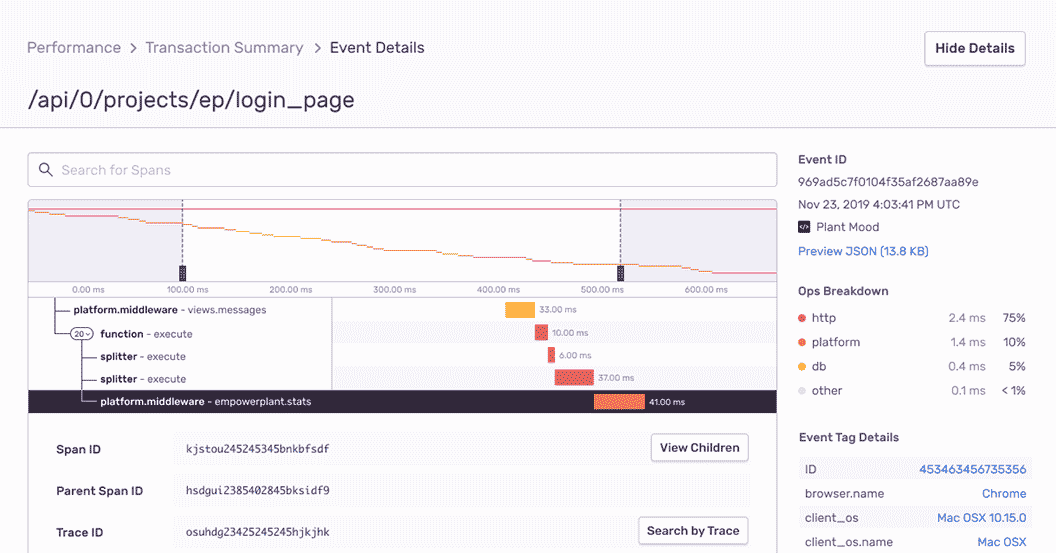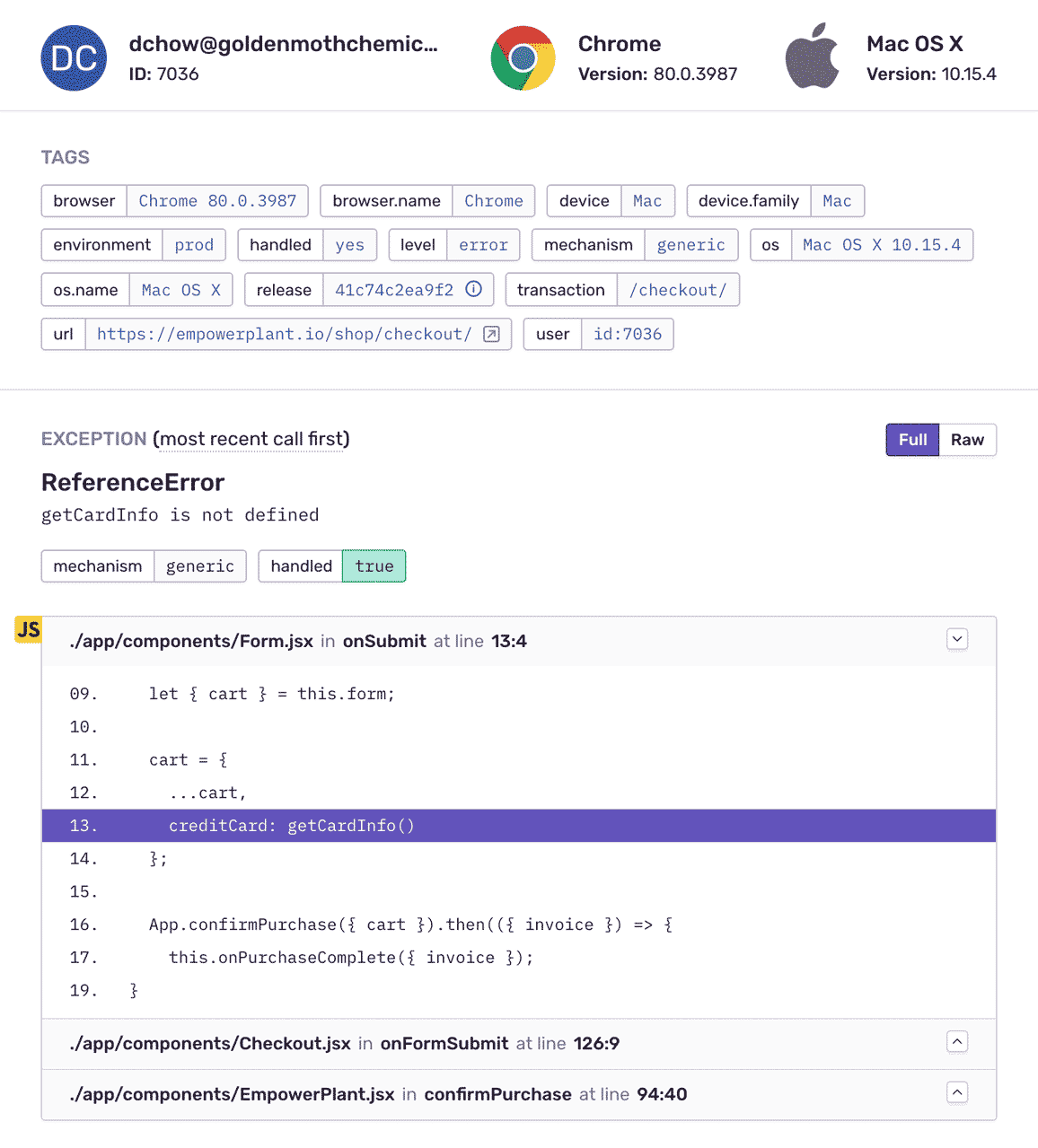
Full Stack Monitoring
Your code is telling you more than what your logs let on. Sentry’s full stack monitoring gives you full visibility into your code, so you can catch issues before they become downtime.

Learn about Tracing
With Sentry’s performance monitoring, you can trace performance issues to poor-performing api calls and slow database queries.
Distributed Tracing 101 for Full Stack Developers
Learn the ins-and-outs of distributed tracing and how it can assist you in monitoring the increasingly complex requirements of full stack applications.
Read moreTracing for the Frontend (to the Backend)
Join Dustin Bailey (Solutions Engineer) as he shows how developers can trace those pesky performance issues to poor-performing API calls & slow database queries across all your services.
Watch nowFind the Root Cause Faster with Trace View and Trace Navigator
Trace View and Trace Navigator give you a throughline between transactions across all your projects.
Read moreLearn about Suspect Spans
Find the slowest operation or “work” taking place on your service. All without having to click into each trace.
Read moreGetting Started is Simple
Grab the Sentry JavaScript SDK:
<script src="https://browser.sentry-cdn.com/<VERSION>/bundle.min.js"></script>
Configure your DSN:
Sentry.init({ dsn: 'https://<key>@sentry.io/<project>' });
Check our documentation for the latest instructions.
See all platformsMore than 150K organizations trust Sentry with their application monitoring.

Trace. Triage. Triumph.
Errors don’t exist in a vacuum. With full-stack monitoring, you can trace frontend errors caused by backend code (and vice versa). Being able to correlate your apm logs with distributed tracing means that you can understand how your stack reacts to your latest deploy or integrating a third-party service.

See the sprawl
Humans are visual creatures. Software errors, not so much. Instead of your eyes slogging over logs, Sentry’s full stack monitoring shows you a complete picture of what’s frustrating your users. Now you can connect those user facing problems on the frontend to impacted services on the backend and fix what matters first.

Understand what your code is thinking. Really.
Connecting issues to their root cause doesn’t have to be a guessing game. With full-stack monitoring, you get added context about the application state so you’re able to quickly understand the impact of specific problems. What’s more, all unhandled exceptions are automatically captured, with individual errors rolling up into larger issues.
”Sometimes errors on the front-end have roots on the backend. We use Sentry’s tags and metadata about a request that comes in to pass along a version of distributed tracing to link these back.”